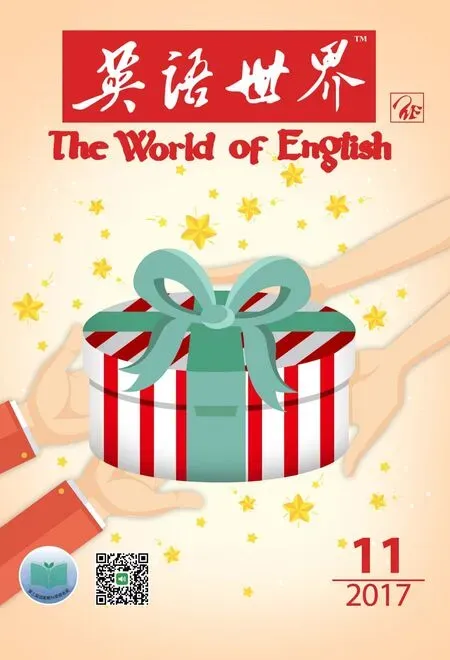各国婚礼礼金风俗
译/赵晓囡
各国婚礼礼金风俗
译/赵晓囡
Monetary Wedding Gift Traditions Around the World

如今,相比于按照婚礼礼物订购清单选购礼品的风俗,结婚送礼金的风潮变得更为流行。如果你没什么经验,不妨记住以下信息。
Giving money is becoming a more popular alternative to sticking to the registry1registry礼品愿望清单。列礼品愿望清单是西方婚礼独有的做法,新郎新娘在结婚之前想清楚婚后家里需要添置的东西,选择某一个(或几个)商场,登记好自己的愿望清单,亲友可到网站上查询新人列出的礼品愿望清单来选礼物,还可以通过清单来查看某些物品是否已经被其他婚礼嘉宾购买。, so here are few things to keep in mind if you’re going green2green缺乏经验的。.
[2]大部分即将步入婚姻的夫妇都希望在结婚之初,他们的银行账户里有些盈余。根据美国的传统,宾客通常向新人赠送可以包装的实物,但现在更为主流的做法是赠送蜜月旅行或礼金。世界各地风俗有所不同。很多文化中,向新郎新娘赠送礼金已经或正在成为一种惯例——而有些地方既送礼物,又送礼金。赠送礼金甚至成为婚礼喜宴上必不可少的环节。
[2] Most to-be-weds would agree that it’d be nice to start off their married lives with a little extra in the bank. In the US, guests traditionally gave gifts you could wrap, but honeymoon and cash registries are now more mainstream. Around the globe things are a little different. In many cultures, money has and is routinely given as a gift to brides and grooms—and sometimes in addition to the giving of other gifts. It can even be an intrinsic3in-trinsic内在的;本身的。part of the wedding reception itself.
[3]不同文化的人们在婚礼上通过不同的方式送新人礼金,这里逐一进行概述。
[3] Here, we’ve outlined how various cultures around the world give money to couples on their wedding day.
中式婚礼
[4]在中式婚礼上,赠送礼金在一个被称为“茶道”的特别的敬茶仪式上完成。婚礼即将结束时,新娘向男方家人敬茶。敬茶仪式开始时,新娘跪在端坐着的长辈面前,然后依照特定的顺序,从公婆开始,按新郎家的辈分次序一一敬茶。

Chinese Weddings
[4] In Chinese weddings, the giving of money is linked to a special tea ceremony calledcha tao. Near the end of the wedding day, a Chinese bride serves tea to her new in-laws. As the tea ceremony begins, the bride kneels in front of the people she will serve, who are seated. She serves the tea in a specific order, starting with the groom’s parents and moving from the oldest to the youngest member of the groom’s family.
[5]长辈饮茶结束后,新娘从每位亲戚手中取回空杯子,并相应得到一个装满礼金(有时是珠宝)的红色信封,称为“红包”。在现代的仪式中,新娘和新郎都要参加敬茶。
[5] When the tea is fi nished, the bride takes the empty cups from each family member and in return she is presented with a red envelope, called ahung bao, which is full of money (and sometimes jewelry). In a more contemporary version of this ritual, both the bride and groom participate.
[6]如今,新郎新娘通常在婚宴上依次向每桌客人敬酒。每次敬酒过后,客人会向新人赠送红包。另一种做法(在美国尤其常见)是手持许愿盒或钱盒。客人将装有礼金的信封和写满祝福的卡片投进安全牢固且装饰精美的礼盒。
[6] Today, brides and grooms of Chinese background often visit each table at their reception to toast their guests. After each toast, the guest may choose to offer money envelopes to the couple. Another option, particularly common in the US, is the wishing well or money box. This is a secure, decorated box into which guests can deposit envelopes and cards fi lled with money and good wishes.
日本婚礼
[7]日本婚礼上赠送礼金的做法很普遍。根据传统,新郎父母将礼金装在特殊的“祝仪袋”里送给新娘家人。信封包装非常精致,金银丝线相互缠绕,系成装饰结。根据日本民俗的说法,绳结寓意永结同心,因此无法打开。礼金数额相当可观,大约等同于新郎三个月的工资,或者固定为50万日元(大约5000美元)。这份礼金被视为男方家庭送给女方家庭的礼物,因此大部分新郎不会将其据为己有。但是礼金赠送环节并未结束,宾客也会向新人赠送礼金。普通朋友一般赠送300美元,关系特别密切的朋友可能给500美元。与新人关系特别好的老板、长辈会分开赠送礼金,总额大约为1000美元。赠送人的姓名和礼金总额写在信封外面。
Japanese Weddings
[7] Money is a very common gift in Japanese weddings. The groom’s parents traditionally give the bride’s family money in a shugi-bukuro4特别节日要用到的信封。, or special envelope. The envelope is elaborately decorated with gold and silver strings twisted and tied into a decorative knot. Japanese folklore says that the knot is supposed to be impossible to open. The amount inside is usually quite generous—three months of the groom’s salary or a set amount of 500,000 yen (about $5,000). Most grooms don’t get to keep the whole amount, which is seen as a family-to-family gift. But the money-giving doesn’t stop there. Guests also give cash gifts to the bride and groom. A friend may give about $300, and an especially close friend may up the sum to $500. Bosses, uncles and aunts may part with up to $1,000 for their favorite couple. The gift-giver’s name and the grand total of the cash inside is written on the outside of the envelope.
波兰婚礼
[8]如果你参加波兰婚礼,假如你想与新娘共舞,不要忘记带安全别针和现金。在波兰婚礼上,宾客将钱别在新娘的婚纱上,以获得与新娘跳舞的机会。这份礼金通常用来资助新人的蜜月旅行。此外,宾客还会围着新娘站成一圈,往她的面纱里投掷现金。有时伴娘会用围裙收集礼金。
Polish Weddings
[8] If you’re attending a Polish wedding, don’t forget safety pins and some cash—that is, if you want a dance with the bride. At a Polish wedding, guests pin money on a bride’s gown to get the chance to dance with her. Usually, the money is used to fund the newlyweds’honeymoon. In addition, guests may form a circle around the bride and toss money into her veil. Sometimes the maid of honor collects money in her apron.
尼日利亚婚礼
[9]尼日利亚新娘在婚礼上四处走动时,手里为何拿着一个装饰精美的袋子?原来要把收到的宾客礼金放到这里。参加尼日利亚婚礼的宾客将装有支票的信封放入袋中。通常,新娘在婚宴上会收到很多信封,她确实会收到很多礼金。有些非洲裔美国夫妇希望能在婚礼上承袭文化传统,于是采用了这种仪式。
Nigerian Weddings
[9] What’s that beautifully decorated bag a Nigerian bride carries around with her at her reception? It’s the receptacle5receptacle容器。for money she’ll be receiving from her guests. Guests at a Nigerian wedding fill the bag with envelopes containing checks. It’s customary for the bride to receive numerous envelopes at the reception as she is literally showered with money. Some African American couples who wish to infuse their weddings with cultural traditions have adopted this ritual.
意大利婚礼
[10]意大利新娘可能也会在婚宴上手持一个特别的袋子。它叫作la borsa(缎袋),是buste(信封)习俗的一部分,宾客们将装有礼金的信封放入缎袋。这些钱用来支付婚礼费用。在婚宴进行期间,意大利家庭通常会把缎袋交由一位年长的亲戚保管。
Italian Weddings
[10] An Italian bride may also be carrying a special bag at her reception. It’s calledla borsa, and as part of a custom calledbuste(meaning “envelopes”), guests place envelopes with money in the satin bag. The money is used to help cover wedding expenses. Italian families often ask an older relative to hold ontola borsaduring the reception.
其他地方
[11]世界各地礼金传统一览:在西班牙,每位在婚礼上
Around the World
[11] Here’s a peek into other traditions involving money: In Spain, each
〔〕
〔〕与新娘共跳传统舞蹈的来宾都会向她赠送礼金。在亚美尼亚,教母替新娘新郎收取礼金,并向宾客分发果脯和干果作为回报。在婚礼当日上午,马来西亚的孩子们捧着盛满食物的托盘、将礼金塞进折成动物形状或花形的信封,步行到新娘家中。在波多黎各,参加婚礼的宾客在与新娘共舞时用别针将礼金别到她的婚纱上,因此新娘浑身披满礼金。这些别针被称作capias,来宾可以从一个特制的娃娃身上摘取。 □ guest who dances with the bride during the seguidillas manchegas6 =sevillanas塞维亚之舞,西班牙最广为世人熟知的民俗舞蹈,节奏欢快鲜明,适合两个或多人对跳,在西班牙各个节庆的时候遍布街头巷尾。, the traditional dance, presents her with a gift of money. In Armenia, a godmother collects money for the bride and groom and gives out dried fruit and nuts to guests in return. On wedding morning in Malaysia, children carrying trays of food and money tucked inside animal or flower-shaped envelopes march to the bride’s house with their offerings. A Puerto Rican bride may be covered with cash after guests pin money to her gown while dancing with her. The pins used are called capias and are available to guests who remove them from a special doll.
[译者单位:中国石油大学(北京)]

